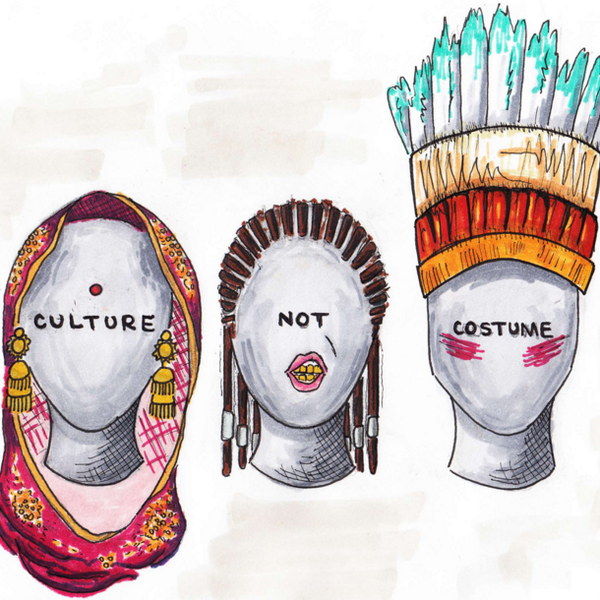This article was previously published in La Jolla High School's newspaper publication The Hi-Tide in 2014
We all come from different cultures, races, and ethnicities that define us as who we are. Our ideologies and beliefs can shape our everyday life and what we believe in. When cultural practices, traditions, or customs are misused, it can offend many who believe in the importance of being respectful to their practices and traditions. Nowadays, cultural practices and customs are being used as an accessory or style, setting aside their genuine significance.
Now, more than ever, people are wearing jewelry, clothing, designs, and hair styles that can be seen as “hip and cool”, but have great meaning for a certain culture. Henna tattoos, removable tattoos that were originally worn for special occasions and holidays in India, Africa, and the Middle East, are now a popular form of art that many girls get for parties. Henna tattoos have many meanings based on their application and what design is put on the skin, but girls simply want pretty suns and flowers to put on their hands and shoulders. The holy cross, a universal symbol for the religion of Christianity, is now worn by girls on their neck or ear, not as a religious symbol for God but as a weird looking “T”. Headdresses and Native American-printed or beaded clothing are seen as hipster by teenage girls, but are still symbolic to the culture of Native Americans; each symbol in Native American patterns are symbolic in some way to their native culture and head dresses were only worn by the most influential and powerful member in a tribe. Box braids, a hairstyle that is predominantly worn by women in the black community, is now being embraced by other people from different races as a cool hairstyle. And the infamous bindi that women wore at Coachella this year was worn as an accessory, when it has been used by many religions for thousands of years as a symbol of femininity, wisdom, and being a Hindu woman of Islam.
All of the examples listed above show how badly our modern age is disregarding the fact that these cultural customs still have significance even if you personally don’t practice the culture or believe in its traditions. This could be due largely to the fact that people are not educated in knowing beforehand what these customs mean. Many people just follow the crowd in what everyone else is doing; if people are wearing bindis or getting the box braid hairstyle and it starts to become a popular trend, people will instantly want to and will follow those trends, not realizing how people can be offended by it.
In some cases though, people might not be offended. Some view what people call “cultural appropriations” as just another culture adopting it and evolving it. In an article posted by the Huffington Post, Anjali Joshi explained how cultural appropriation is being taken too literally. “Culture evolves. Indians appreciated the beauty of a bindi and brought it into the world of fashion several decades ago. The single red dot that once was transformed into a multitude of colors and shapes… Hindus accepted the evolution of this cultural symbol.” It is only when the true significance of a symbolic item is stripped from its “religious, historical, and cultural context” that makes it offensive to the people that practice a culture.
So, what can we actually say is cultural appropriation? It is now a common specticel that we all see and physically participate in without realizing it. To everyone, it is interpreted differently. Some may see it as offensive to wear something that is symbolic to a culture, even if it is for a party or just for fun. Others may be more lenient on their opinion as to what is cultural appropriation as long as it doesn’t take away the valued meaning of the item. All in all, cultural appropriation shouldn’t be regularly practiced on all items that are from a specific culture, but if it is, it should not be stripped away from its true valued meaning.





















